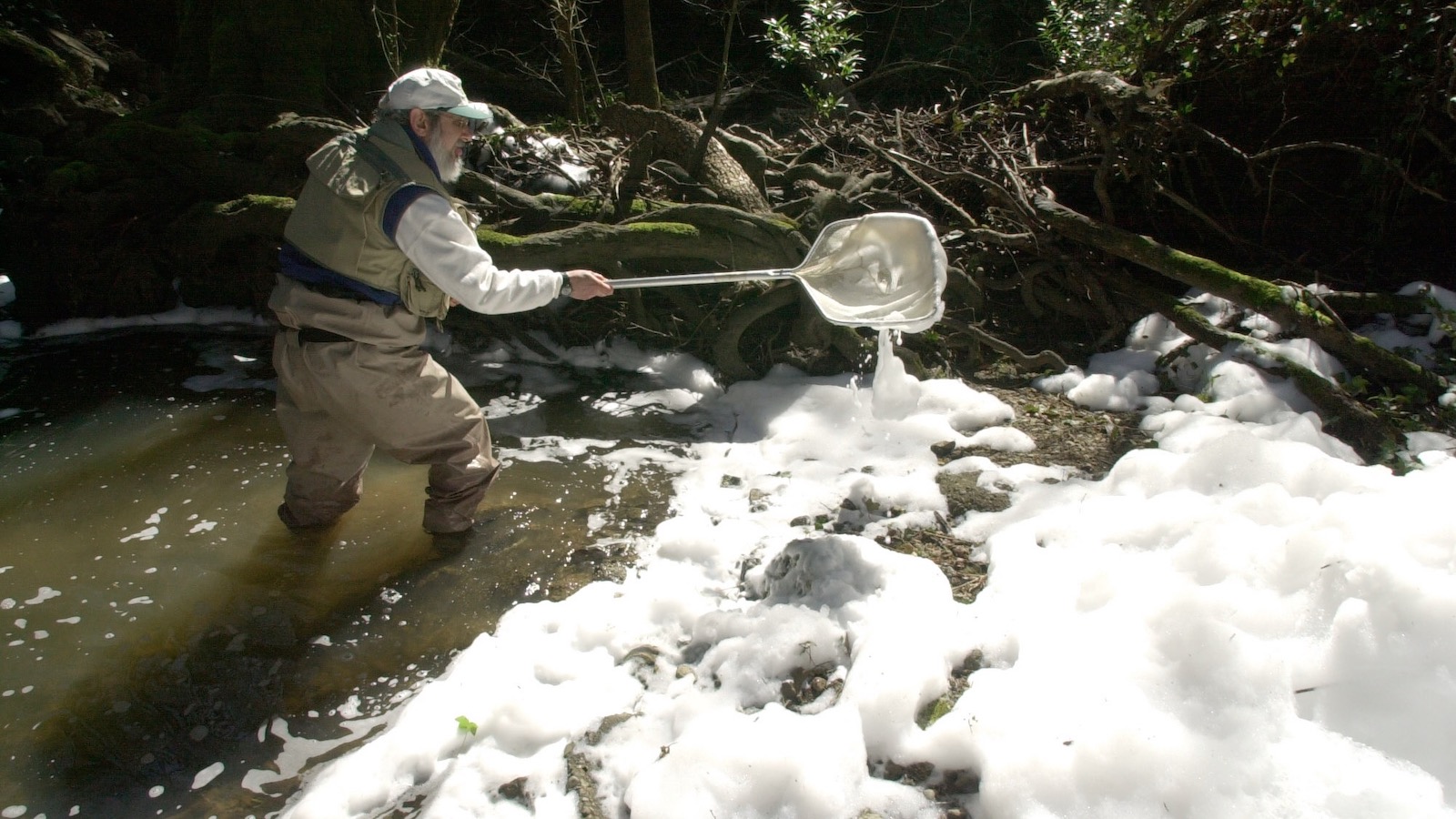The U.S. Environmental Protection Agency drew praise earlier this year when it proposed long-awaited drinking water standards for six per- and polyfluoroalkyl substances, or PFAS. But the agency is missing a major source of these so-called “forever chemicals,” according to researchers at Harvard University.
A study published Monday in the journal Environmental Science and Technology finds that PFAS “precursors” from firefighting foam can make their way into the soil and groundwater, where they slowly transform into the carcinogenic substances the EPA targeted. At a military site in Massachusetts — the focus of the study — these precursors accounted for roughly half of all groundwater contamination by those chemicals. But on a national scale they are infrequently monitored, and none are regulated.
Bridger Ruyle, the study’s lead author and a former doctoral student at the Harvard School of Engineering and Applied Sciences, said the results raise concerns about ongoing PFAS pollution at hundreds of military locations. Regulators are “missing the big-picture chemistry at these sites,” he told Grist.
PFAS are a class of more than 9,000 fluorinated compounds that have been used since the mid-1900s to make clothing and food containers, among other products, oil- and water-repellent. They also make firefighting foam spread faster over fires. They don’t break down naturally over time, hence the nickname “forever chemicals,” and mounting research links them to kidney and testicular cancers, compromised immune systems, thyroid disorders, and other health problems.
Some products, like firefighting foam, also contain PFAS precursors — compounds that, when subjected to the right microbes or other environmental conditions, transform into forever chemicals.
The U.S. Department of Defense, one of the country’s biggest users of firefighting foam, is legally required to phase those chemicals and their precursors out of its firefighting foam by October, but transitioning to safer products won’t do anything to clean up decades of pollution. At the military site in Massachusetts, called Joint Base Cape Cod, Ruyle and his colleagues found that precursors released into the soil as long as 50 years ago continued to turn into PFHxS and PFBS — two of the PFAS identified as most hazardous by the EPA — leading to concentrations 2,000 times higher than current regulatory limits.
To Ruyle, this suggests that precursors could drive PFAS pollution at unsafe levels for years into the future. “Contamination will probably last for several hundreds of years, potentially longer,” he said. The paper says forever chemicals are already widespread at more than 300 military bases around the country that used firefighting foams.
Jamie DeWitt, a professor of pharmacology and toxicology at East Carolina University in North Carolina, who wasn’t involved in the study, said the researchers were “spot on” to highlight the precursors as an underappreciated risk to human health. Contamination from firefighting foam “is going to be an ongoing source of exposure,” she said.
While many have applauded the proposed drinking water standards for six common PFAS, critics say the EPA has yet to address thousands of additional PFAS and hundreds of their precursors, many of which have already been detected in the natural environment. DeWitt says it’s time for the agency to regulate PFAS and their precursors as a class, rather than trying to evaluate their hazards individually. “It can be challenging to provide regulatory oversight when the expectation is that you do it on a chemical-by-chemical basis,” she said.
Ruyle was more hesitant, citing some hard-to-avoid uses for fluorinated compounds — like in medicine. But he said the EPA should at least regulate precursors that are known to transform into hazardous PFAS. “A lot of preliminary evidence suggests that these types of compounds may be even more toxic at the same dose,” he said. “It doesn’t make sense to have one but not the other” covered by the EPA’s regulations.
In response to Grist’s request for comment, the EPA said it was pursuing a “whole-of-agency” approach to PFAS pollution, including by “considering regulatory actions to address groups of PFAS.” The agency is “focused on improving its ability to address multiple chemicals at once,” a spokesperson said. The EPA accepting public comments on its proposed drinking water standards for six of the forever chemicals until the end of the month.
This story has been updated to include a comment from the EPA.




